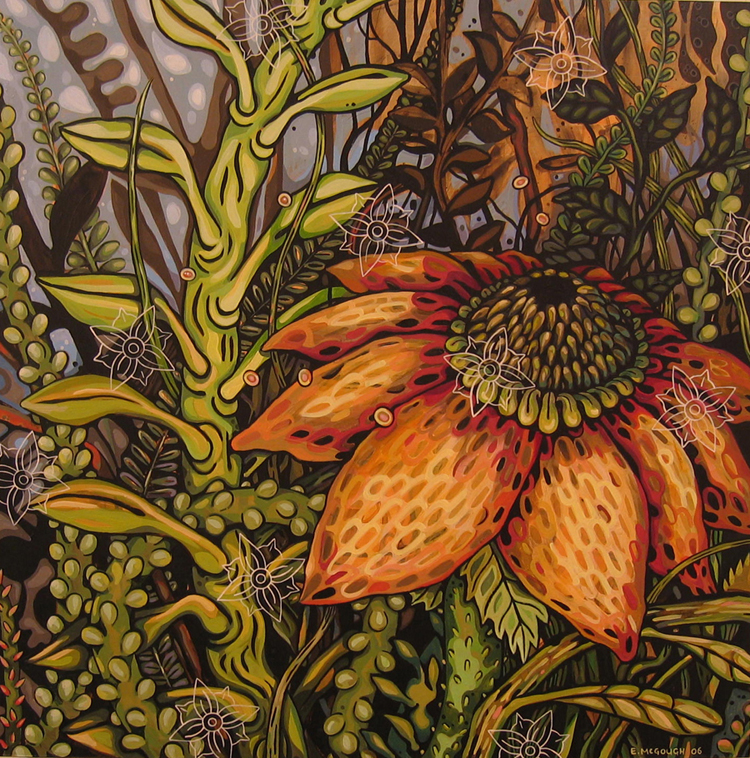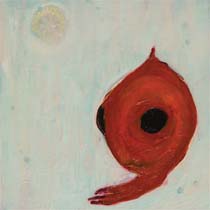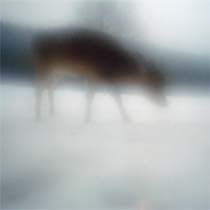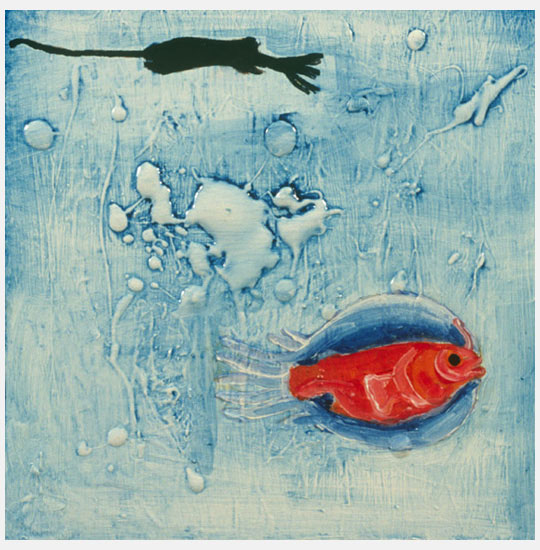The Ambiguity of Wonder: Mark Dion, Christine Baeumler, and Eleanor McGough at Gallery Co.
Christina Schmid investigates nuanced renderings of nature's hidden frailties and marvels in "Naked Wonder", a group show on exhibit at Gallery Co. through January 4, 2008.

Artists have sought to represent the natural world for almost as long as people have been awed into reverential silence by nature’s sublime attractions. Historically, the convergence of nature and art has been, if not tumultuous, still subject to the occasional controversy. Think, for example, of Damien Hirst’s carcasses floating in formaldehyde or about the insects in Huang Yong Ping’s work. The paintings, drawings, and photographs assembled in Naked Wonder do not invite such debate. Instead, the artwork seems to beckon us to share both the profound sense of wonder at nature’s “intricacies, beauty, secrets, and revelations,” as curator Colleen Sheehy puts it, and to wonder how our human actions might look like from the perspective of sentient creatures big and small, who cannot help but be impacted by our way of life. This ambiguity allows both for reveling in an old-fashioned sort of aesthetic beauty and for a very timely recognition of our human involvement in the fate of nature’s miraculous, but frail, wonders.
Naked Wonder is an intelligent show that allows each of the three participating artists to articulate and share her or his particular vision of nature. Christine Baeumler’s paintings of aquatic life provide us with an imaginary entry point into an alien world, beautifully colorful and vibrant, filled with sentient creatures and, very prominently, their eyes, which look back at us blankly, without sentiment or sentimentality. Eleanor McGough’s work does not take us to exotic oceanic locations but to the microscopic: into exquisitely rendered sub-cellular geometries that unfold in many layers, tricking the eye into imagining motion and light wafting through forests of tangled grasses, where plankton, pollen, or spores glisten for a split second in a lunar ray of light.
While McGough’s work lends itself to such poetic reverie, Mark Dion’s photographs are more prosaic. At the most basic level they take us into his extended backyard, a farm in Pennsylvania, where the artist has been documenting the secret life of deer. At times, the deer barely seem to materialize out of mist, are caught in fleeting motion, grazing placidly, or in awkward mid-stride. Each photograph is individually framed, diligently stamped with the words “Bureau of Remote Wildlife Surveillance,” and arranged in a rigid grid that resonates with the mechanics of surveillance technology. The quintessential image of romanticized nature—it’s Bambi, after all—meets bureaucratic espionage. This unexpected collision brings nature and culture into close contact and raises an important if oft-stated point: what we call nature or appreciate as the natural world is always a creature of culture.

In Dion’s work, the “nature” in question is at once mundane and secretive: in the Midwest deer are everywhere, their habitat expanding with the spread of suburbia. Shot for fun and sport, tragically familiar as road kill, spotted in unlikely places in the middle of the city—deer are everywhere. But in Dion’s photographs, the deer also become reclusive strangers, whose inexplicable customs must be closely and suspiciously watched. The deer, as a pop-cultural incarnation of innocence, takes on a tongue-in-cheek sinister edge here, threatening enough to warrant remote surveillance.
Clearly, it does not take a leap of the imagination to connect the activities of Dion’s “Bureau of Remote Wildlife Surveillance” with not-so-recent political events. Nature becomes his idiom for indirect political commentary, and the deer invite us to examine our preconceived notions about them: are those beautiful creatures best understood as pest, food, menace, or gentle big-eyed innocence incarnate?
While Dion’s photographs make us take a second look at the everyday nature around us, rendering even common deer, suddenly, very strange indeed, McGough’s paintings invite us to zoom in on what we usually do not see at all, either because it is too small or because we have seen it a hundred times and can’t be bothered to look again. Her paintings and drawings ask for a pause, a conscious act of taking the time to notice the extraordinary in the minute and familiar. The artist’s focused attention looks closely at the wonder evident in these tiny, ubiquitous elements of the natural world, and in so doing has captured the beauty of sub-cellular structures and tangled grasses, reeds, and tubers alike.

Yet McGough’s art is not a slave to accurate representation: what look like the elastic legs of an octopus emerge playfully from in between grassy fronds. It’s impossible to understand this work as botanical drawing or mimetic representation. Sub-atomic structures drift across shadowy reeds and ornamentally rendered flower heads seem ready to pop off the canvas.
The appeal of seeing the extraordinary in the ordinary, and the ordinary transformed into the extraordinary, or into the miraculous even, has held human imagination in its thrall for a long time. Curator Sheehy references the Renaissance wunderkammern, cabinets of wonder that presented idiosyncratic collections of natural objects, which, thus displayed, became objects worthy of aesthetic appreciation in and of themselves. Yet the artwork of Naked Wonder does not revolve around the aesthetics of the natural object per se or even around its representation by an artist’s hand. What the pieces by Dion, McGough, and Baeumler investigate are the intricate relationships, modes of connectedness, and interdependence evident in the natural world—a world which happens to include us, a very successfully propagating species of mammal.
These relationships seem to extend outward from the gallery walls to engulf and involve us, the spectators. Baeumler’s work in particular begs us to recognize the complex relations of our everyday actions to the seemingly distant aquatic worlds, which, considered in environmental terms, are actually quite close. So, as we marvel at the sheer beauty of Baeumler’s seascapes and the strangeness of the creatures that populate them, we should also wonder what those big eyes—another case of big, presumably innocent eyes—see when they look at us: predators? Clueless polluters? Creatures who have very urgent choices to make?

The beauty of Baeumler’s work strategically eases viewers into these questions. Aesthetic beauty here is not self-serving but, instead, a means to connect aesthetic value with concerns of ethical and conceptual poignancy. Thus these paintings serve as a way to imagine an artistic practice that is not narrowly confined to what happens in the studio but extends outward to encompass the artist as a socially engaged, politically aware, and creatively responsible citizen. In the information about Baeumler that Gallery Co makes available to visitors, the artist’s involvement with community organizations, a nature sanctuary and a local park are specifically mentioned. Artistic practice here is understood as a far-reaching and profound involvement that is not content with merely showing us beauty to wonder at but an ephemeral beauty whose subject could only benefit from more active wondering about.
To end on a speculative note, maybe we need to wonder first—at the awe-inspiring places that have made this art possible—and then proceed to wonder, quite actively, what we can do to keep them and their mysterious creatures alive. But naked wonder alone may be an ambivalent indulgence these days. Perhaps it goes without saying that looking at art, even if it is as stunning as in this show, is different from looking at nature. One cannot substitute for the other. It would be a terrible loss if, one day, these imaginary journeys into nature were all that was left to us.
What: Naked Wonder: Work by Christine Baeumler, Mark Dion, and Eleanor McGough
Where: Gallery Co. in the Wyman Building, Minneapolis, MN
When: The exhibit runs through January 4, 2008
Tickets: FREE and open to the public, Monday-Friday from 10 am-5 pm.